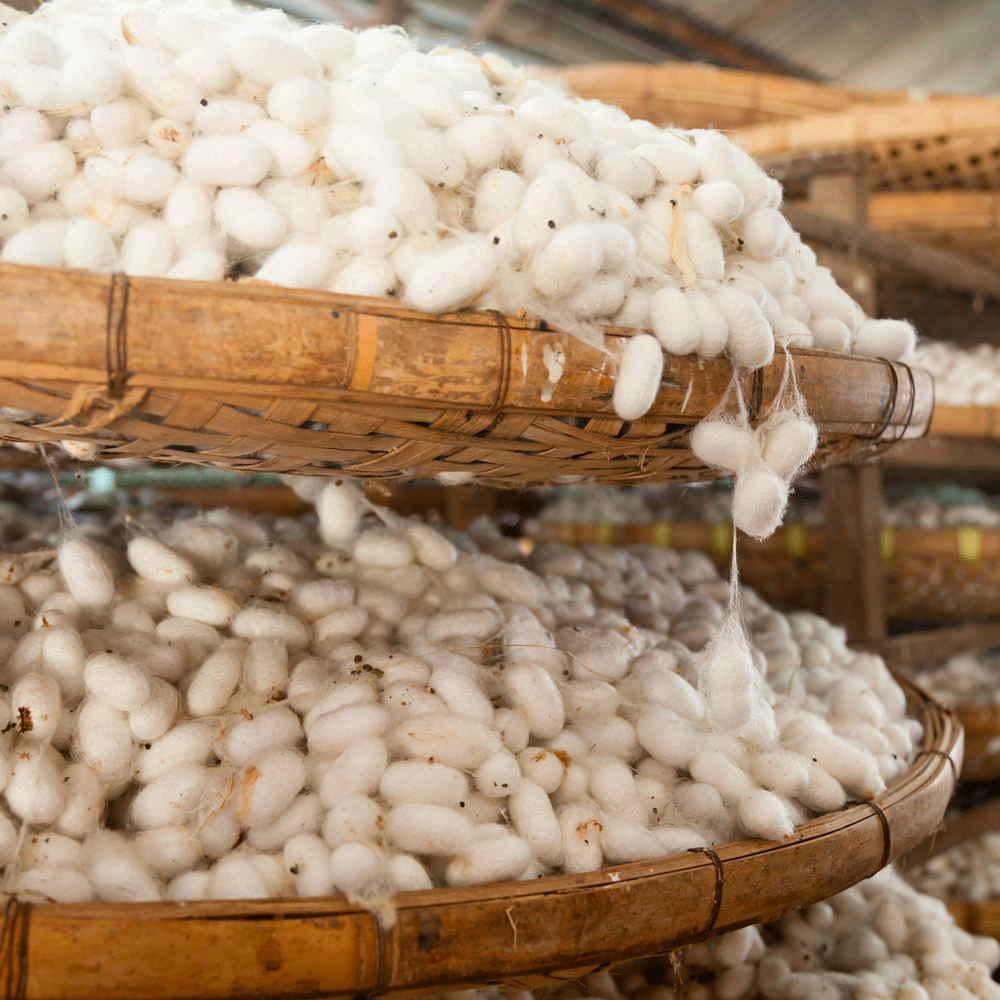Silk is the fibre that silkworms weave to make their cocoons – outer casings that protect them during the pupal stage. But most of the insects used by the silk industry don’t live past this stage, because they are boiled or gassed alive inside their cocoons, which causes the cocoons to begin unravelling so that workers can obtain the silk threads. Some 6,600 silkworms are killed to make just 1 kilogram of silk.
At silk-production facilities in India, silkworms who are allowed to mature into moths fare little better than those who were boiled alive inside their cocoons. After they have laid their eggs, female moths are crushed to death and their bodies are checked under a microscope for diseases. If any disease is found, the eggs are destroyed. Male moths are simply discarded after they mate. It’s not uncommon to see birds pecking at baskets full of male moths left outside of silk-production facilities.
Although worms can’t show their distress in ways that humans easily recognise, anyone who has ever seen earthworms become startled when their dark homes are uncovered must acknowledge that worms are sensitive. They produce endorphins and have a physical response to pain. [PETA]

